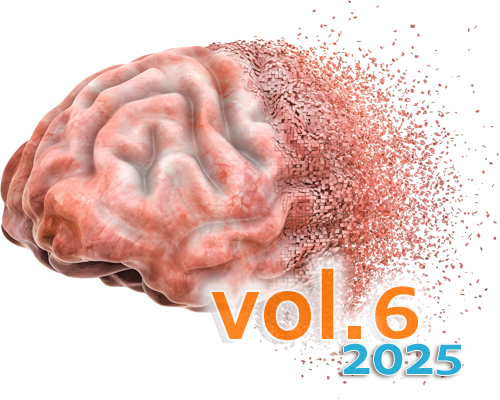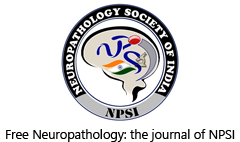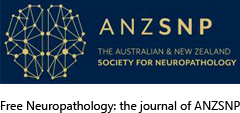Morphological substrate of chronic schizophrenia in elderly patients: a clinicopathological study
DOI:
https://doi.org/10.17879/freeneuropathology-2025-6315Keywords:
Schizophrenia, Cognitive impairment, Neuropathology, Alzheimer disease, Concomitant pathologiesAbstract
Objective: Patients with schizophrenia are at a higher risk of developing dementia, but the basis of cognitive impairment is a matter of discussion. Conflicting results regarding the association of schizophrenia with Alzheimer disease (AD) may partly be attributable to the inclusion of non-AD lesions, which few clinicopathological studies have considered. Therefore, a re-evaluation of an autopsy cohort of elderly schizophrenics published previously [1] was performed.
Material & methods: Among 99 consecutive autopsy cases of patients who met the DSM-5 and ICD.10 criteria for schizophrenia (mean age 69.5 ± 8.25 years), 56 showed moderate to severe dementia. All brains were blindly examined using the current criteria for AD and looking for concomitant lesions. They were compared with the frequency of AD in an autopsy series of 1.750 aged demented individuals
Results: Four cases revealed the features of definite AD, five probable AD, and three aged 82–89 years were classified as primary age-related tauopathy (PART). Two cases were a cortical type of dementia with Lewy bodies (DLB), one Lewy body disease of brainstem type; six showed hippocampal sclerosis, 14 argyrophilic grain disease (AGD), and one progressive supranuclear palsy (PSP). Other co-pathologies were frequent lacunes in basal ganglia, moderate cerebral amyloid angiopathy, minor development anomalies in the entorhinal cortex, Fahr's disease, metastatic tumors, and acute or old cerebral infarctions (n = 4 each). Definite AD was seen in 48 % of the age-matched demented control group.
Conclusions: In this cohort of elderly schizophrenic patients, only 7.6 % fulfilled the neuropathological criteria of definite or probable AD and 3.6 % of PART compared to 6 % to 13.7 % typical and atypical AD in the literature, whereas a considerable number of cases showed non-AD co-pathologies. This is in line with other studies showing that the frequency of AD in elderly schizophrenics may be equal to or less than in age-matched controls. Further studies are needed to elucidate the mechanisms of cognitive decline in schizophrenia.
Metrics
Published
How to Cite
Issue
Section
License
Copyright (c) 2025 Kurt A. Jellinger

This work is licensed under a Creative Commons Attribution 4.0 International License.
Papers are published open access under the Creative Commons BY 4.0 license. This license lets others distribute, remix, adapt, and build upon your work, even commercially, as long as they credit you for the original creation. Data included in the article are made available under the CC0 1.0 Public Domain Dedication waiver, unless otherwise stated, meaning that all copyrights are waived.



















